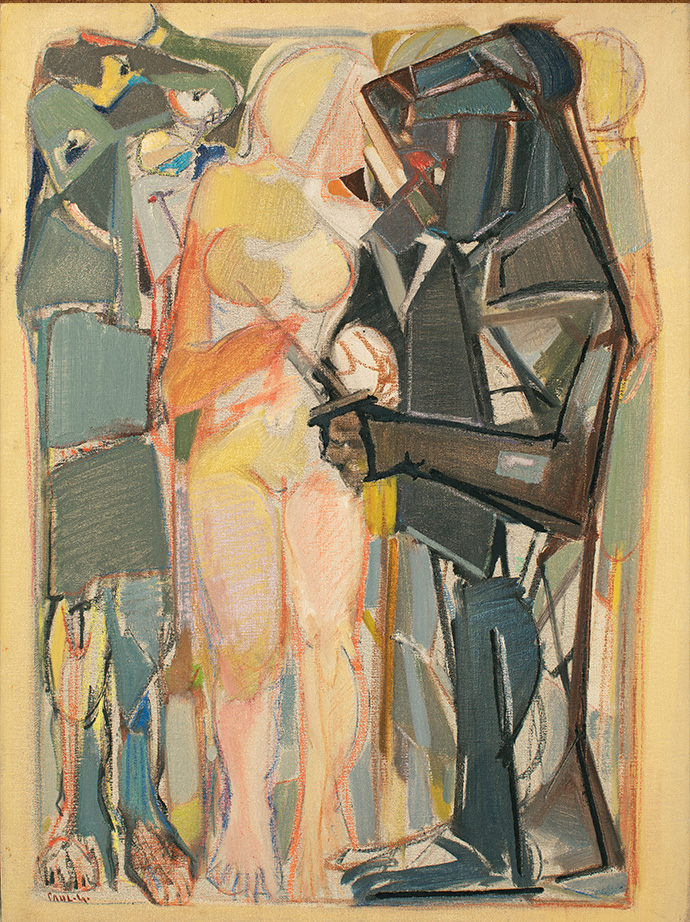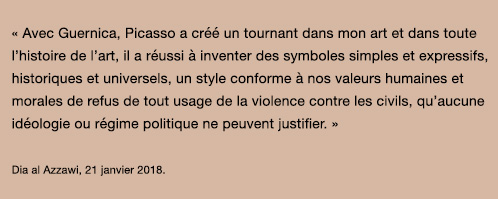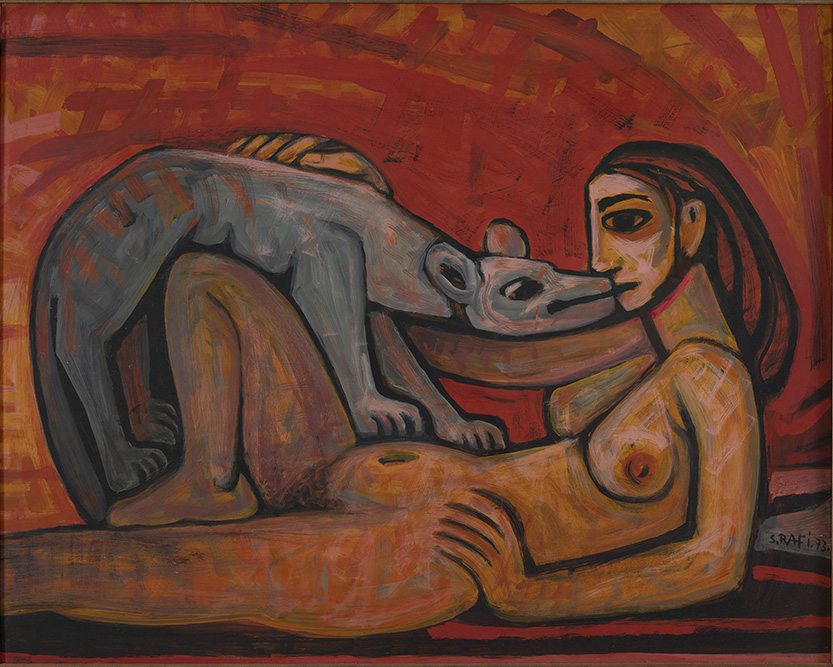Art as a weapon for condemning violence
The Syrian painter Alwani Khozaima, whose work is being shown for the first time in France at the Institut du Monde Arabe – Tourcoing exhibition, produced a triptych condemning the massacres committed in Hamah by the Syrian Ba'athist regime in February 1982 to eradicate the Muslim Brotherhood opposition. After a 27-day siege, the army proceeded to massacre civilians. Khozaima produced several versions of this subject by taking the language of forms and characters from Guernica—the minotaur, the horse with the pointed tongue—and making it his own. In a book published in 2003, whose title Horses and Nights quotes the Abbasid-era poet Al-Mutanabbi (tenth century), Khozaima gathers the different versions of the triptych and, in the few notes that he adds, outlines three key ideas: the need to turn away from capitalism, the conviction that Islam upholds non-economic values, and that Palestine and Jerusalem are at the heart of the Arab nation.

The Lebanese-born painter Nabil Kanso, who emigrated to New York and was championed by Alfred Barr (1902-1981), untiringly painted the suffering inflicted by wars, both in Lebanon and in Vietnam, defending the moral stance of Guernica. An indefatigable and prolific worker, Aref Rayess traveled across Asia, Africa, Europe, and the Americas, prompting many encounters that nourished his humanist art. The Arab-Israeli conflicts spurred his commitment to capture the absurdity of war in his painting. After being invited to Algeria in 1975, he produced a collection of etchings titled The Road to Peace, conveying events from the Lebanese Civil War and the Algerian War in a tragic vision that contrasted the gregarious crowd of humans with the blind threat of monstrous animals.
In one of the few interviews available with Paul Guiragossian on Lebanese television, the artist explained that Picasso had been an iconic and tutelary figure for him. Guiragossian's family history spread across three lands marked by atrocities and conflicts: Armenia, Palestine, and Lebanon. In his paintings, he condemned the massacres of Deir ez-Zor perpetrated in Syria against the Armenians who had survived the genocide of 1915-1916. Highlighting the horror of the civilian killings was a leitmotif in his work. The exhibition includes two previously unseen paintings, each portraying a man-machine killer facing innocence, symbolized by a female figure. Iraqi artists were part of the pan-Arab militant melting pot. In 1958, Mahmoud Sabri painted one of his most poignant pieces condemning the Algerian war: The Massacres of Algiers. As the work disappeared during the American invasion of 2003 and the looting of the Museum of Modern Art in Baghdad, all that remains is a photograph of Sabri in his studio right after the painting was finished.
Similarly, the pacifism of the Iraqi Dia Al-Azzawi is represented by two series of prints depicting the killings of Palestinian civilians in Lebanon. His major work, Sabra and Shatila Massacre, now housed at the Tate Modern in London, was inspired by Jean Genet's essay "Quatre Heures à Chatila" [Four Hours in Shatila] and is a reaction to the massacres committed against Palestinian civilians in southern Beirut in 1982. Both in terms of its size—7.5 x 3 meters—and its formal language, it deliberately follows in the wake of Guernica.







 Summary
Summary